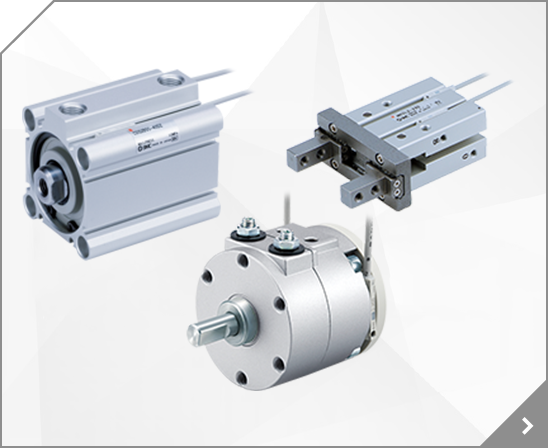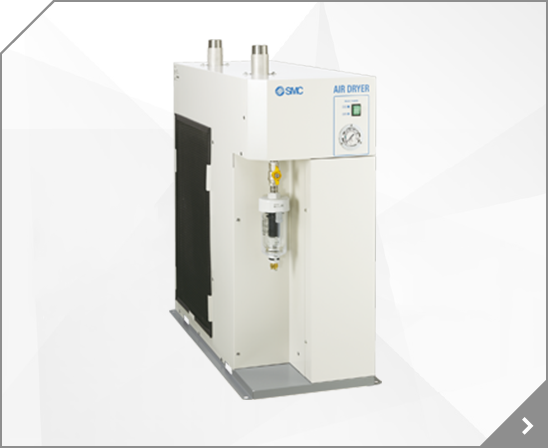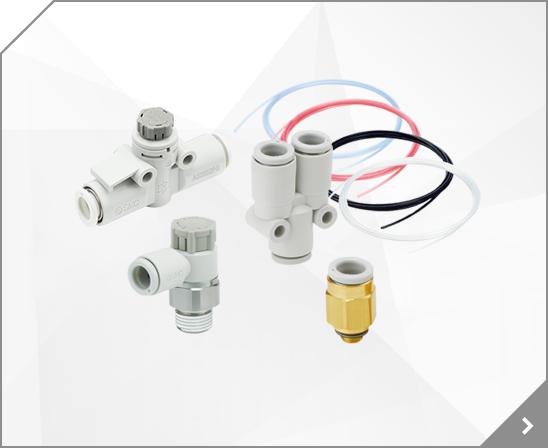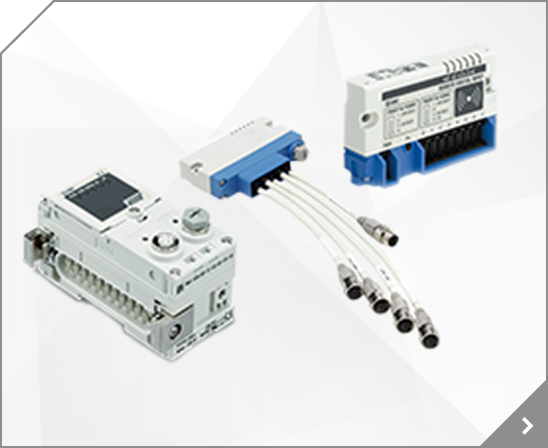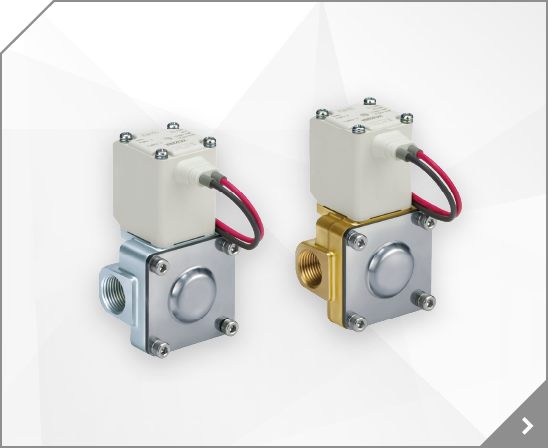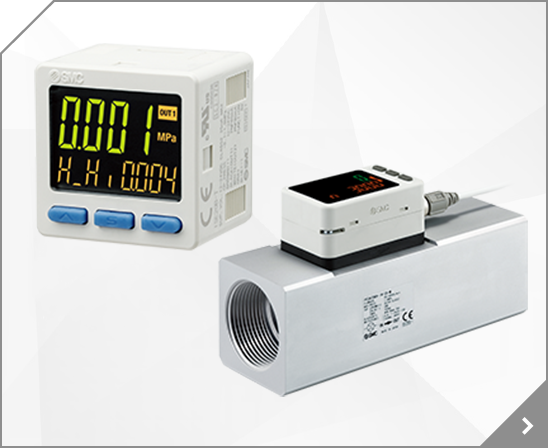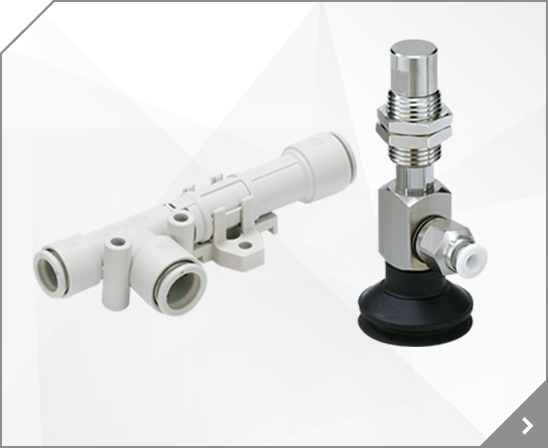
Designed to be compact and function in areas where height and space is limited, SMC's new LEL low-profile electric actuator acheives a 50% reduction in height (when compared to the LEFB) by side mounting the motor. Suitable for handling operations, this guide rod slider is available with sliding bearings or ball bushing bearings. Both types offer positioning repeatability of ±0.1mm, and
Designed to be compact and function in areas where height and space is limited, SMC's new LEL low-profile electric actuator acheives a 50% reduction in height (when compared to the LEFB) by side mounting the motor. Suitable for handling operations, this guide rod slider is available with sliding bearings or ball bushing bearings. Both types offer positioning repeatability of ±0.1mm, and
Designed to be compact and function in areas where height and space is limited, SMC's new LEL low-profile electric actuator acheives a 50% reduction in height (when compared to the LEFB) by side mounting the motor. Suitable for handling operations, this guide rod slider is available with sliding bearings or ball bushing bearings. Both types offer positioning repeatability of ±0.1mm, and
Designed to be compact and function in areas where height and space is limited, SMC's new LEL low-profile electric actuator acheives a 50% reduction in height (when compared to the LEFB) by side mounting the motor. Suitable for handling operations, this guide rod slider is available with sliding bearings or ball bushing bearings. Both types offer positioning repeatability of ±0.1mm, and
Designed to be compact and function in areas where height and space is limited, SMC's new LEL low-profile electric actuator acheives a 50% reduction in height (when compared to the LEFB) by side mounting the motor. Suitable for handling operations, this guide rod slider is available with sliding bearings or ball bushing bearings. Both types offer positioning repeatability of ±0.1mm, and
Magnet: Built-in Magnet, Mounting: Basic, Bore Size: 160mm, Thread: NPT, Stroke 1: 100mm, Rod Boot 1: None, Stroke Adjustment: None, +: +, Stroke 2: 100mm, Rod Boot 2: None, Auto Switch: No Switch, Lead Wire or Prewired Connector: 0.5m (Or None in the Case of No Switch), Number: 2 pcs. (Or None in the Case of No Switch), Stroke Options: Dual Stroke, Single Rod Type
This is a legacy product. Please contact us for the latest version.sales@ocaire.com
This is a legacy product. Please contact us for the latest version.sales@ocaire.com
This is a legacy product. Please contact us for the latest version.sales@ocaire.com
This is a legacy product. Please contact us for the latest version.sales@ocaire.com
This is a legacy product. Please contact us for the latest version.sales@ocaire.com
LECP1 series is a programless controller capable of setting up an electric actuator operation without using a PC or teaching box. Through the combination of parallel I/O inputs, 14 points of positioning are available. The speed and acceleration of the positioning can be set by the switch for each operating direction. A single signal sent to a dedicated terminal returns an actuator to
LECP1 series is a programless controller capable of setting up an electric actuator operation without using a PC or teaching box. Through the combination of parallel I/O inputs, 14 points of positioning are available. The speed and acceleration of the positioning can be set by the switch for each operating direction. A single signal sent to a dedicated terminal returns an actuator to
LECP1 series is a programless controller capable of setting up an electric actuator operation without using a PC or teaching box. Through the combination of parallel I/O inputs, 14 points of positioning are available. The speed and acceleration of the positioning can be set by the switch for each operating direction. A single signal sent to a dedicated terminal returns an actuator to
LECP1 series is a programless controller capable of setting up an electric actuator operation without using a PC or teaching box. Through the combination of parallel I/O inputs, 14 points of positioning are available. The speed and acceleration of the positioning can be set by the switch for each operating direction. A single signal sent to a dedicated terminal returns an actuator to
LECP1 series is a programless controller capable of setting up an electric actuator operation without using a PC or teaching box. Through the combination of parallel I/O inputs, 14 points of positioning are available. The speed and acceleration of the positioning can be set by the switch for each operating direction. A single signal sent to a dedicated terminal returns an actuator to
LECP1 series is a programless controller capable of setting up an electric actuator operation without using a PC or teaching box. Through the combination of parallel I/O inputs, 14 points of positioning are available. The speed and acceleration of the positioning can be set by the switch for each operating direction. A single signal sent to a dedicated terminal returns an actuator to
LECP1 series is a programless controller capable of setting up an electric actuator operation without using a PC or teaching box. Through the combination of parallel I/O inputs, 14 points of positioning are available. The speed and acceleration of the positioning can be set by the switch for each operating direction. A single signal sent to a dedicated terminal returns an actuator to
LECP1 series is a programless controller capable of setting up an electric actuator operation without using a PC or teaching box. Through the combination of parallel I/O inputs, 14 points of positioning are available. The speed and acceleration of the positioning can be set by the switch for each operating direction. A single signal sent to a dedicated terminal returns an actuator to
LECP1 series is a programless controller capable of setting up an electric actuator operation without using a PC or teaching box. Through the combination of parallel I/O inputs, 14 points of positioning are available. The speed and acceleration of the positioning can be set by the switch for each operating direction. A single signal sent to a dedicated terminal returns an actuator to
